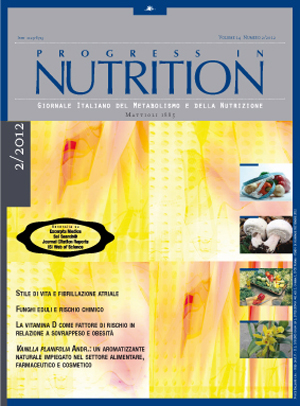Obesità ed espressione della proteina chinasi Cε nelle cellule del sangue periferico
Keywords:
Western blot, recettori dell’insulina, BMI, diabete, signaling, insulin receptors, diabetesAbstract
Le sindromi metaboliche, un gruppo di disordini del metabolismo che includono insulino-resistenza, obesità, iperglicemia, dislipidemia e ipertensione; sono principalmente causate nelle società avanzate da un’eccessiva nutrizione, uno stile di vita sedentario ma anche da predisposizioni genetiche. L’obesità, l’insulino-resistenza e il diabete di tipo 2 sono associate a – e in parte causate da – l’aumento dell’espressione della proteina chinasi C (PKC)ε nel tessuto epatico, pancreatico, adiposo e muscolare scheletrico. È stato ampiamente dimostrato che PKCε interferisce con il signaling del recettore dell’insulina (IR) e con la secrezione e la clearance dell’insulina stessa. Noi abbiamo studiato i livelli di espressione di PKCε e IR nelle cellule mononucleate del sangue di bambini obesi. Inoltre abbiamo analizzato la correlazione esistente tra il rapporto PKCε/IR e il BMI in un adulto volontario sottoposto a regime dietetico ipercalorico. Infine, viene discusso il ruolo di PKCε quale potenziale bersaglio terapeutico nel trattamento dell’obesità.Obesity and Protein kinase Cε epsilon expression in peripheral blood cells
Summary
The so-called Metabolic Syndrome is a clustering of metabolic disorders, including insulin resistance, obesity, hyperglycemia, dyslipidemia, and hypertension, mainly caused by overnutrition and sedentary lifestyles particularly in developed countries as well as genetic predisposition. Obesity, insulin resistance and type 2 diabetes are associated and caused by the upregulation of the protein kinase C (PKC)ε expression in hepatic, adipose, pancreatic and skeletal tissue. It is well known that PKCε affects insulin receptor (IR) singaling and regulates both insulin secretion and clearance. Here, we have studied the expression levels of PKCε and IR in peripheral blood cells of obese children. Moreover, we have analyzed the correlation between PKCε/IR ratio with the BMI in adult underwent to high caloric food diet. As a final point, the role of PKCε as therapeutic target for management of obesity was discussed.
Downloads
Published
Issue
Section
License
This is an Open Access article distributed under the terms of the Creative Commons Attribution License (https://creativecommons.org/licenses/by-nc/4.0) which permits unrestricted use, distribution, and reproduction in any medium, provided the original work is properly cited.
Transfer of Copyright and Permission to Reproduce Parts of Published Papers.
Authors retain the copyright for their published work. No formal permission will be required to reproduce parts (tables or illustrations) of published papers, provided the source is quoted appropriately and reproduction has no commercial intent. Reproductions with commercial intent will require written permission and payment of royalties.

This work is licensed under a Creative Commons Attribution-NonCommercial 4.0 International License.


